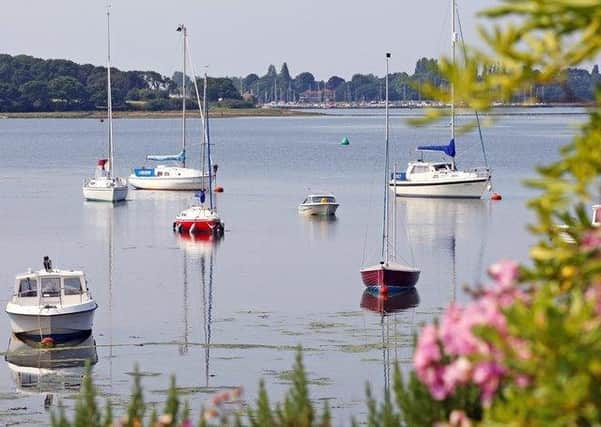'Potentially dangerous' levels of E. coli in Chichester Harbour study finds


Results from a Citizen Science project run by the Clean Harbours Partnership (CHP) in Langstone and Chichester Harbours to research pollution in harbour water has revealed E. coli [Escherichia coli] levels from stormwater overflows can be up to 760 times the threshold considered to be acceptable to public health.
Under the direction of Clean Harbours Partnership (CHP), accredited laboratory tests show several E. coli readings over 1,000 cfu/100ml, with one reading in Langstone Harbour, near to outflow at Budds Farm wastewater treatment works, as high as 380,000 cfu/100ml – 760 times the failure rate for levels of bacteria set under The EU Bathing Water Directive.Southern Water has said that neither Langstone nor Chichester is a designated bathing water.Concentrations less than 250 cfu/100ml are considered ‘excellent’ water quality while any readings exceeding 500 cfu/100ml signify ‘failure’ with a risk to human health. E.coli is a harmful bacteria commonly found in sewage that can cause infection, diarrhoea and vomiting when ingested. However, the presence of E.coli is considered by scientists to be a proxy for the state of river and sea water – and an indicator for many other contaminants.
Advertisement
Hide AdAdvertisement
Hide AdWater samples were taken from both Chichester and Langstone Harbours during November when, according to Southern Water’s own data (Beachbuoy) there was over 1,000hrs of untreated wastewater dumped into Chichester Harbour, plus over 350hrs released from Budds Farm alone into Langstone. Chichester Harbour is an Area of Outstanding Natural Beauty. Both harbours are Sites of Special Scientific interest (SSSI).
A Southern Water spokesman said: “Neither Langstone nor Chichester is a designated bathing water – they are working harbours with all that entails.
“When it comes to e coli there are very many sources – boats, agriculture, industry private sewer networks and contaminated road run off to name a few. Our treatment works at Chichester uses UV disinfection to kill any remaining bacteria before the treated wastewater is released.
"We are currently completing projects in the area to prevent ground water forcing its way into our network which will reduce the need for storm releases. Our £79 million pipeline will take wastewater from the Chichester area to other works to support local development and population growth.”
Advertisement
Hide AdAdvertisement
Hide AdRob Bailey of CHP said: “We initiated this research because our local communities and water users want to know what pollution is in our harbour water. The Authorities either can’t or won’t tell us. Recent local demonstrations show a loss of trust in Southern Water and a loss of faith in the system that is meant to protect the public and the environment.
"Both Chichester and Langstone Harbours have gold star environmental designations. If E.coli concentrations are a bellwether for water quality, we clearly have a problem that needs addressing. We will be sharing our findings with the Environment Agency although their track record for investigating such situations has been poor.”
Bianca Carr of CHP, added: “We believe it is important to share these findings with the public so that harbour users can make more informed decisions about when they get out on or into the water.
"We have found high concentrations of bacteria near the sewage outfalls – however there are few signs informing the public of this danger and despite not being designated bathing water they are regularly used recreationally by local communities. In the interest of public safety, we would like to see clear signage recommending that nobody uses the inshore waters after storms.This most recent testing is part of CHP’s Project Spotlight, the largest ever Citizen Science initiative around Chichester and Langstone Harbours. Over 300 seawater samples have been taken to identify the range of pollution present.
Advertisement
Hide AdAdvertisement
Hide AdUnder the guidance of the Universities of Portsmouth and Brunel, the project is testing for the presence of some 500 chemicals, including pharmaceuticals and pesticides. Findings are expected to be published in early 2023.